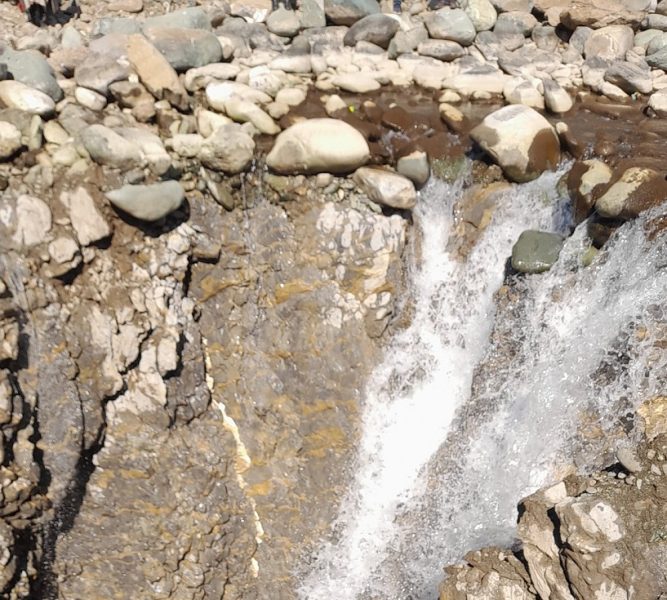
A sinkhole swallowed a famous stream in Kashmir. Was climate change to blame?

A sinkhole has swallowed a stream teaming with trout in South Kashmir, with opinions divided over the cause of the geological phenomenon.
The famous Brengi stream in the Kokernag area of Anantnag district has been draining into a sinkhole since early this week. Brengi is sought after by anglers for its brown trout, and the phenomenon has left the downstream portion dry, killing fish in large numbers.
The sinkhole is believed to have been caused by the chemical dissolution of limestone rocks in the river. The administration has asked people not to come close to it, and imposed Section 144, which prohibits public assembly.
“People are requested to follow the administration’s advisory. Don’t go close to the sinkhole,” the Deputy Commissioner of Anantnag, Piyush Singla, said.
The local newspaper Kashmir Observer quoted experts as saying that it was a natural phenomenon.
The experts, from the Kashmir Irrigation and Flood Control Department and the Department Of Mining And Geology, said the vertical hole in the stream was a natural phenomenon, not caused by climate change.
Dr Reyaz Ahmad Dar, Department of Earth Sciences, University of Kashmir, said: “Beneath boulders in any river or stream, there’s a layer known as ‘limestone’. Limestone’s composition is calcium carbonate, which is very prone to solution or chemical activities.”
“Because of limestone’s chemical solution, it usually develops holes, one of which is the sinkhole which we’re currently witnessing in Brengi. So it’s completely natural and people shouldn’t worry about it. It is absolutely nonsensical to co-link climate change with this sinkhole,” he said.
In Kashmir, due to tectonic activities, there are many faults and deformations of rocks that provide a passage to water and create sinkholes, he said.
The Deputy Commissioner of Anantnag, Piyush Singla, announced a committee to study the incident.
Farooq Ahmad Dar, an expert on geology and professor at Kashmir University, said the best solution was to fill up the sinkhole with builders and other materials. “However, the expert committee also needs to look into other possibilities, as it’s likely that some other small-scale sinkholes are also present in the stream.”
Locals, however, said they feared for their safety, as it appeared that the sinkhole had swallowed the entire stream, and efforts by the administration to divert water had not succeeded.
“The river has disappeared. The government should do something. We are worried about drinking water and irrigation. Even our land can collapse. What’s the guarantee our village is safe?” a report quoted a local as saying.


